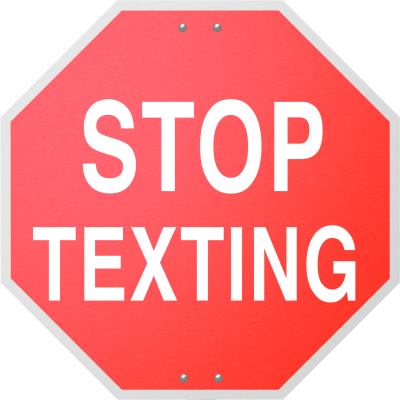 Learning how to drive can be one of the most exciting times in a teenager's life. It can give teens a sense of power and freedom that was never experienced before. With this new freedom, however, comes a great load of responsibility. When you're in a vehicle, you are responsible for about two tons of machinery. Learning how to actively obey driving laws, avoid distractions, and perform maintenance can ensure that your time spent cruising will remain safe and fun.
Learning how to drive can be one of the most exciting times in a teenager's life. It can give teens a sense of power and freedom that was never experienced before. With this new freedom, however, comes a great load of responsibility. When you're in a vehicle, you are responsible for about two tons of machinery. Learning how to actively obey driving laws, avoid distractions, and perform maintenance can ensure that your time spent cruising will remain safe and fun.
Obey Driving Laws
Teen drivers are beholden to all of the laws that adult drivers have to respect while on the road. Before getting into a vehicle by yourself for the first time, know the terrain of where you want to drive. Get a working understanding of the neighbourhoods you want to drive through, their average speed limits, and any road detours that you might have to take. Use your car's signals and obey traffic lights, even when you think that no other car is around. If you have any driving restrictions, respect them. Always keep an adult in the passenger seat if it's part of your learner's permit agreement. Stay off the road as directed if your laws impose a curfew on young drivers. You should also never drive without assistive devices if you need them. Wearing your eyeglasses ensures that you have the best view of the road possible.
Avoid Distractions
It can be easy for anyone to become distracted while driving, but teens especially are at high risk for experiencing accidents on the road. Using cell phones while driving remains one of the greatest risk factors for car accidents. Both calls and texting require that drivers look away from the road.  Personal grooming, like the fixing of hair or the application of makeup, sometimes involves the use of car mirrors that should be utilized for keeping apprised of surroundings and traffic movement. Spills from eating and drinking while driving can also cause drivers to panic and swerve or brake without realizing it, putting themselves and other drivers on the road in harm's way.
Personal grooming, like the fixing of hair or the application of makeup, sometimes involves the use of car mirrors that should be utilized for keeping apprised of surroundings and traffic movement. Spills from eating and drinking while driving can also cause drivers to panic and swerve or brake without realizing it, putting themselves and other drivers on the road in harm's way.
Some regions have decided to address the high instance of preventable distractions on the road by enacting laws that prohibit the use of cell phones while driving. In some cases, hands-free cell phone use is legal for adults over a certain age but is completely prohibited for people 18 and younger. Check your local laws to determine the legality of the activity. Generally, it's best to perform all non-driving-related activities outside of a vehicle. Do your hair and makeup at home. For the safest ride possible, turn your cell phone off before you start driving. It can also be a good idea to keep your radio at an average or below-average sound level so you can hear everything that is going on around you.
Never get into a vehicle with the intent to rush to wherever you want to go. Instead, plan ahead and allot enough time to prepare and get there with minutes to spare. Use a GPS device with turn-by-turn directions enabled to help you keep your eyes on the road. If the device makes a mistake just relax and keep driving, and allow it to recalculate your route. If you're riding with someone who is causing you distress or anger, instruct them to exit the vehicle. Your safety is more important than winning an argument.
Perform Maintenance
Read the manual of any vehicle that you plan on driving regularly. Familiarize yourself with what's under the hood. Know where the engine, battery, radiator, and other major components of your car are. Learning this layout might help you identify where a problem is originating, should you ever have car trouble. Perform basic inspections before you get into a car and take it out for a spin. Check the tires to verify that enough air is in them. Rotate them or change them if the tread on them appears to be compromised (have a licensed mechanic do this for you). Top off oil and other fluid levels. Change and check items on the exterior of the car that can be broken, like windshield wipers or lights. Taking your vehicle in to have regular tune-upscan also save you thousands of dollars in major repairs.
While it's never a good idea to use a cell phone while driving, it can be smart to keep one in your car for emergencies. Cell phones can help you call for help if you ever get stranded or have other types of car trouble while driving. Keep an emergency kit in your trunk. Include items in it like flares, flashlights, emergency triangles, and basic first aid supplies with a small, foldable blanket. Tool kits, jacks, empty fuel containers, jumper cables, and spare tires can give good Samaritans items to work with when trying to help you out. For even more security, include some bottled water and a few dry snacks.
- I Just Got My License: Now What?
- FAQs About Teen Driver Crash Risks
- Tips for Teen Driving
- Novice Driving Safety Tips
- Smart Teen Driving (PDF)
- Teens and Cars (PDF)
- Safe Driving for Teens
- Spotlighting Teen Issues: Teen Driving (PDF)
- Car Safety Checklist
- Safe Teen Driving Tips
- Safety Tips for Parents and Laws for Young Teen Drivers (PDF)
- Teen Driver Statistics and Safety Tips (PDF)
- Responsible Teen Driving
- Teen Driving Tips for the Deadliest Days on the Road
- Safety Tips for Teenage Drivers
- Parent/Teen Driving Guide (PDF)
- Teen Driver Safety Recommendations (PDF)
By: Daniel Watson
